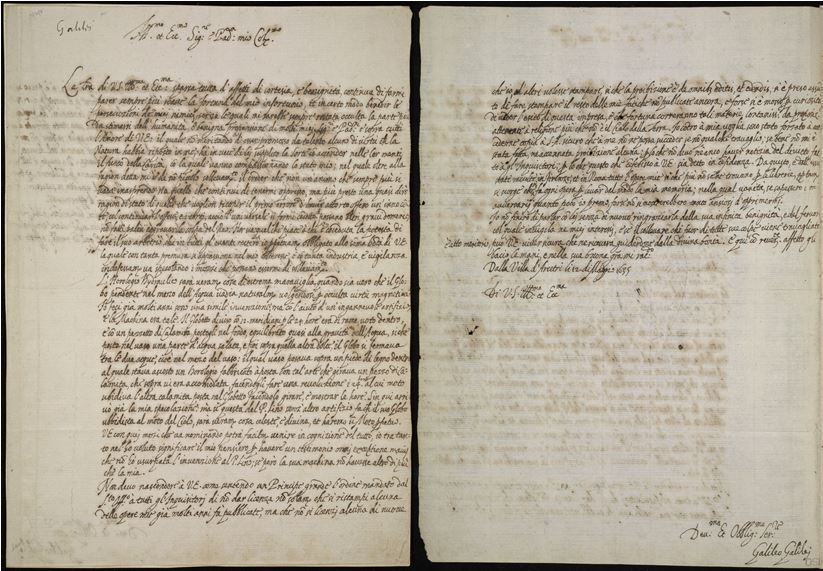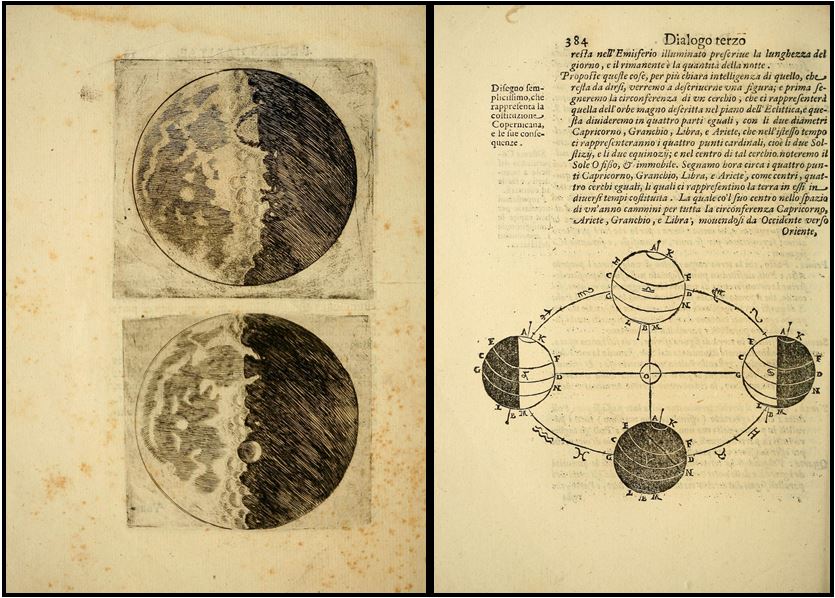Galileo Galilei, one of the most famous and important scientists of all time, a man whose ideas survived Roman Inquisition and house arrest, is going up against Jackson Pollock, Langston Hughes and others to determine who is the “Most Seriously Amazing” at the Smithsonian. In this second annual contest, units from around the Smithsonian have picked their most remarkable objects and are asking the public to vote for the best of the Smithsonian.

The Libraries has selected one of its greatest treasures – a handwritten letter by Galileo Galilei. From his home in Arcetri, Italy, Galileo corresponded with his French colleague, Nicolaus Claude Fabri de Peiresc, mathematician and natural philosopher. The Italian script is clearly legible and so are the date and the signature: “May 12, 1635, Galileo Galilei.” The letter describes an interesting water-clock driven by a mysterious magnetic force made by Father Francis Line; and a similar instrument that Galileo had designed some years earlier.

Why is it so amazing? Based on his telescopic observations, Galileo famously supported heliocentrism, the theory that the Earth (and all planets in our solar system) revolved around the Sun, at a time when the Catholic Church firmly held that it was the other way around. The content of the manuscript has references to the fact that Galileo was under house arrest at the time and that the Inquisition exercised restrictions on his publications in Italy. These references to Galileo’s life make the letter a unique primary resource for Galileo biographers and science historians.

The Libraries also holds many of Galileo’s seminal publications in astronomy – including Sidereus nuncius (The Starry Messenger), 1620, in which he describes new stars and the phases of the moon, and Dialogo dei due massimi sistemi del mondo (Dialogue Concerning the Two Chief World Systems), 1632, a rhetorical conversation between advocates for heliocentrism and geocentrism.

Galileo’s work laid the foundation for modern astronomy and physics. We think his work is, by far, the Most Seriously Amazing at the Smithsonian! Vote for him today with this link and share with your friends!
Voters are also eligible for an impressive prize pack from the Smithsonian Store worth over $400!

Be First to Comment